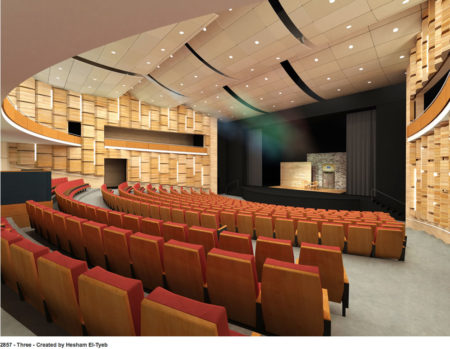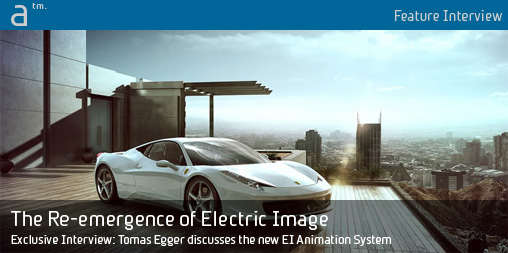Continued from page 1
Electric Image Through the Years
AFR: I definitely remember many years ago learning that Electric Image was being used at George Lucas’ Industrial Light and Magic. Was ILM a major big customer back then and who else was influential in using it back in the 90’s?
TE: The EIAS team worked closely with the Rebel Unit (a team of artists using Macintosh computers) at ILM to develop features in the software. EIAS has always had users at Disney, ILM, NASA and a wide variety of VFX houses.
Advertisement
AFR: Back in 2003, Architosh reviewed Electric Image Universe 5. Where did the Universe name go? Or more precisely, where did it come from to begin with?
TE: The Electric Image company was bought in 1998 by Play, Inc, a video hardware company. Play decided to change the name of the software from the Electric Image Animation System to Universe. They felt the name was more appropriate for marketing purposes. In 2001, the original developers bought the intellectual properly back from Play. The original name was restored at that time.
AFR: What has been the evolution of Modeler? I understand that Modeler got terminated and a new modeling solution was being developed. Can you tell me about that history a bit?
TE: EI Modeler (EIM) was discontinued in 2003. The previous company tried to modernize EIM, naming it Tesla, but after that they had some problems updating the Spatial ACIS modeling kernel license and stopped development. We didn’t buy the intellectual property of EIM.
Electric Image: Users and Pipelines
AFR: Can you tell me if EIAS 9 today has a built-in modeler solution or does the user need to bring in their own models?
TE: Right now, we don’t have a built-in way to model inside EIAS (Animator application). EIAS 9 includes a complete rewrite of its model importation system to provide fast and accurate importation of popular 3D model file formats.

02 - EIAS 9 continues to expand on its renowned rendering engine in both quality and speed. (image courtesy of EIAS 3D. All rights reserved. Image created by Hesham El-Tyeb )
AFR: What is the technology and purpose behind the new Import System?
TE: We are bringing to EIAS the latest technologies. The new Import System is able to bring in GoZ ZBrush files, LWO2 LightWave files, modo files, EPS/AI Files, Autodesk DXF files, and OBJ files with materials and textures and so on.
It is an amazingly fast system and has been re-designed to provide advanced options and model diagnostics for all imported formats. The importer validates the geometry uncovering possible problems before you get to the rendering stage. Custom presets can be created for each 3D format. Multiple 3D files can be added to a project in alphanumeric order with a single import operation. The import software for every 3D format has been rewritten and support for new formats have been added.

03 - EIAS v9's is utilized for a Mercedes engine. (2010 © JCM Animation for 5D Film/Mercedes AMG, All rights reserved. Image courtesy of EIAS 3D.)

04 - An interior view of an Evermotion scene. EIAS is popular with architects and designers for its rendering quality.
AFR: That’s great but EIAS is also an important file format in the industry itself–am I correct? And many long-standing CAD and 3D apps have exported to it’s native format also…
TE: Yes, you are absolutely right. Autodessys’ popular formZ and bonzai 3D comes to mind, Graphisoft’s ArchiCAD and others including Silo, Shark, and ViaCAD.
AFR: A lot of studio pipelines use a bunch of Autodesk tools. And those tools are now getting connected together with Autodesk FBX. Can you tell me about FBX support in EIAS 9? Do you have it and if not why?
TE: Yes, the Autodesk tools are being used in many studios. We have an FBX import system and will be updating it with the latest libraries in a future release. Connecting with other 3D apps is one of our main goals.
AFR: You have a lot of new features in the latest version. What features were the existing users asking for the most?
Next page: Electric Image: Today and the Future




Reader Comments
Comments for this story are closed